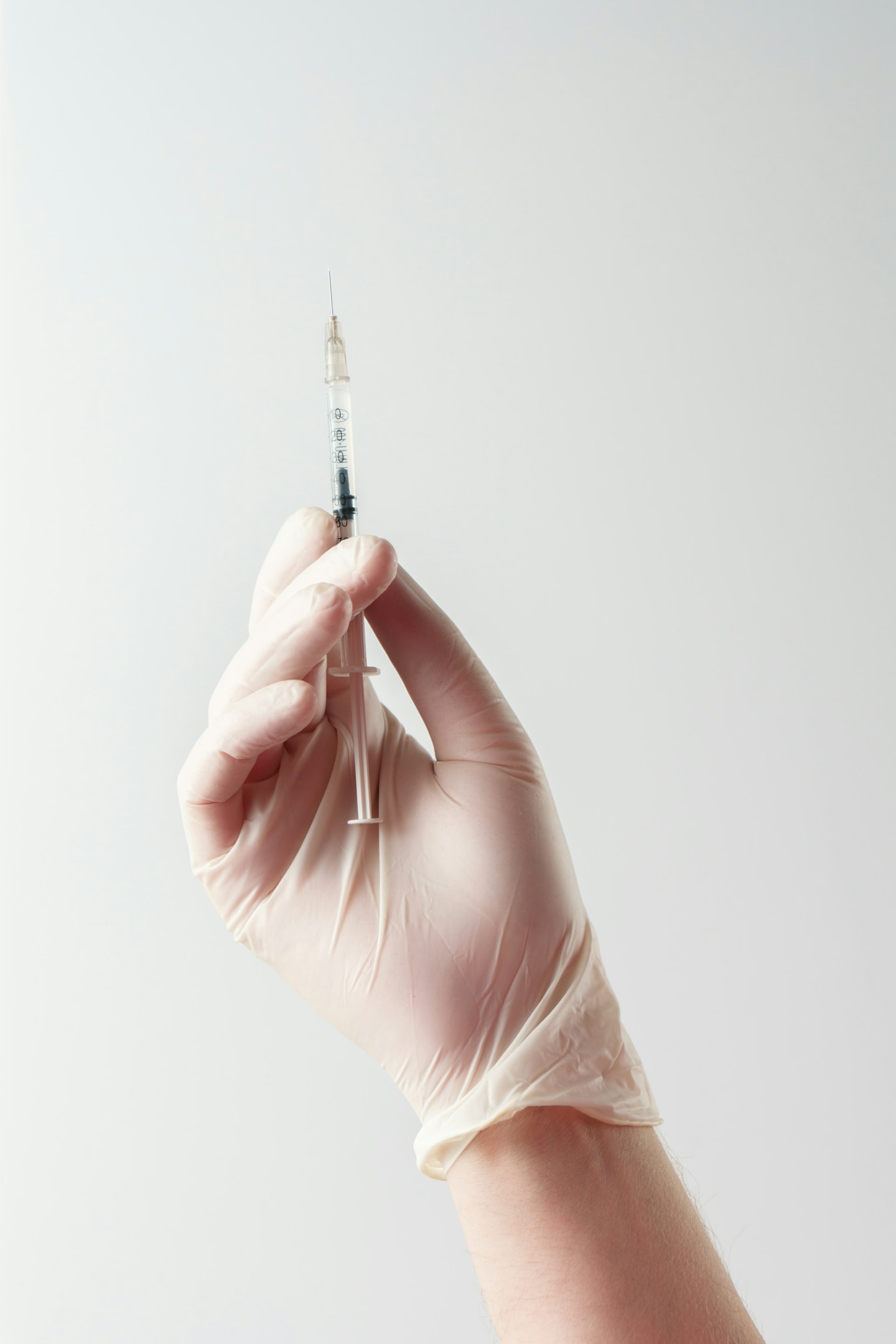GLP-1/GIP is a medication that aids in weight loss and controls type 2 diabetes by regulating blood sugar levels.
In this guide, we will explore what is GLP-1/GIP, including its mechanism, benefits, dosing, and side effects.
Key Takeaways
GLP-1/GIP is an FDA-approved medication for managing type 2 diabetes, facilitating weight loss, and treating severe obstructive sleep apnea through a dual mechanism of action.
The dosage of GLP-1/GIP typicall begins at 2.5 mg weekly, with potential increases based on patient response, emphasizing the importance of adherence to a comprehensive treatment plan including diet and exercise.
Common side effects include gastrointestinal issues and injection site reactions, while serious risks involve potential thyroid tumors and acute pancreatitis, necessitating close monitoring and communication with healthcare providers.

Understanding GLP-1/GIP
GLP-1/GIP, marketed under the brand names Mounjaro and Zepbound, is a medication designed to address two significant health challenges: weight loss and type 2 diabetes management. Approved by the FDA, GLP-1/GIP is also used to treat severe obstructive sleep apnea, making it a versatile option for those with multiple health concerns.
The primary mechanism by which GLP-1/GIP manages type 2 diabetes involves increasing insulin levels and decreasing blood sugar, thus improving overall glucose control. This dual functionality makes it a powerful tool in the fight against these pervasive health issues.
How GLP-1/GIP Works
GLP-1/GIP operates through a unique dual mechanism of action, combining the effects of a glucose-dependent insulinotropic polypeptide receptor and a GLP-1 receptor agonist. This combination activates both GLP-1 and dependent insulinotropic polypeptide gip receptors, which play crucial roles in managing blood sugar levels and body weight.
GLP-1/GIP enhances insulin secretion by acting on GLP-1 receptors, aiding in glucose management and appetite suppression. The activation of GIP receptors also increases insulin release upon eating, supporting blood sugar control.
The medication is prescribed alongside diet and exercise, reinforcing its role in comprehensive diabetes management.
Clinical Benefits of GLP-1/GIP
GLP-1/GIP has shown significant benefits in clinical trials, particularly for those struggling with obesity and related health conditions. One of the most remarkable outcomes is weight loss, with some studies indicating reductions exceeding 15% of body weight.
Beyond weight loss, GLP-1/GIP also offers improvements in metabolic health indicators, such as BMI and blood pressure. These benefits extend to better blood sugar control, making it an effective treatment for type 2 diabetes. The drug mimics natural hormones that promote fullness, enhancing insulin secretion and reducing appetite.
Furthermore, GLP-1/GIP helps slow gastric emptying, which contributes to prolonged feelings of satiety and reduced calorie intake. Activation of GIP receptors aids in breaking down stored fats, increasing energy expenditure and promoting fat loss. These mechanisms collectively support substantial weight management and metabolic health improvements.

Dosage Guidelines for GLP-1/GIP
When starting GLP-1/GIP therapy, it’s crucial to follow tailored dosing schedules designed to meet individual needs. Patients should inform their healthcare providers about all medications, including prescription and over-the-counter drugs, vitamins, and supplements, to ensure safe and effective treatment.
These dosing schedules are not static; they are adjusted based on the patient’s progress and response to treatment. Let’s delve into the specifics of initial and maintenance dosing to better understand how to use GLP-1/GIP effectively.
Initial Dosing
The initial dosing of GLP-1/GIP typically starts at 2.5 mg per week. After four weeks, if the patient tolerates the medication well, the dose may be increased to 5 mg. This incremental approach helps the body adjust to the medication and reduces the risk of side effects.
Administer GLP-1/GIP via subcutaneous injection at sites like the upper arm, thigh, or abdomen. Rotating injection sites minimizes irritation and tissue damage.
If a dose is missed, take it as soon as remembered, within four days of the scheduled time.
Maintenance Dosing
Ongoing treatment with GLP-1/GIP typically involves maintenance doses ranging from 5 mg to 15 mg weekly, adjusted based on patient needs and response. These doses effectively enhance glycemic control and support long-term weight management.
The dosage may be increased by increments of 2.5 mg after at least four weeks on the current dose to ensure optimal blood sugar control and weight management. Combining GLP-1/GIP with a reduced-calorie diet and regular exercise can further enhance its effectiveness.
Common Side Effects
Like any medication, GLP-1/GIP is associated with common side effects, including gastrointestinal issues such as nausea, vomiting, and abdominal pain. These symptoms often occur as the body adjusts to the medication and typically improve over time.
Injection site reactions, such as redness and swelling, are also common. Other gastrointestinal issues like belching, constipation, and indigestion have been reported in more than 5% of users. Monitor these side effects and consult a healthcare provider if they persist or worsen.
Serious Side Effects and Warnings
Despite its benefits, GLP-1/GIP carries serious risks, including the potential development of thyroid tumors. Patients should be monitored for signs of thyroid cancer, such as neck lumps, swelling, difficulty swallowing, or shortness of breath.
Acute pancreatitis is another serious side effect, characterized by severe abdominal pain and severe stomach pain. Hypoglycemia, or low blood sugar, can occur, especially when GLP-1/GIP is combined with other diabetes medications that lower blood sugar. Patients should be vigilant and seek medical attention if they experience severe stomach problems, acute kidney injury, or gallbladder disease.
Severe allergic reactions, though rare, are possible and require immediate medical attention. Symptoms such as difficulty breathing or swelling should not be ignored. In cases of overdose, contacting poison control or emergency services is crucial.
Using GLP-1/GIP Safely
Administer GLP-1/GIP via subcutaneous injection once a week, and ensure patients are trained on proper injection techniques to avoid complications. Rotating injection sites prevents tissue damage.
If a missed dose is taken as soon as remembered, provided it’s within four days of the scheduled time. There must be at least three days between doses to avoid overdosing.
Carefully read the prescription label and follow the dosing schedule for safe and effective treatment.
Interactions with Other Medications
Patients on GLP-1/GIP must inform their healthcare provider about all other medications they are taking, including supplements and herbal products, as these can impact the effectiveness of GLP-1/GIP. This is particularly crucial for those on other diabetes medications, as combining these can increase the risk of hypoglycemia.
Oral contraceptives may be less effective during GLP-1/GIP treatment, so alternative birth control pills should be considered. Monitor carefully when using GLP-1/GIP alongside other drugs that affect blood sugar levels to avoid adverse interactions.
Cost and Accessibility
The cost of GLP-1/GIP can be a significant barrier for many patients, with the average retail price for a month’s supply exceeding $1,000. However, Mixx offers a more affordable option, with pricing starting at $120 per month. This makes GLP-1/GIP therapy accessible to a broader range of patients.
Insurance coverage for GLP-1/GIP varies widely, and patients should check with their insurers to understand their specific coverage levels. Mixx enhances accessibility by offering no initial consultation fees and providing financial assistance options, including manufacturer coupons and savings programs.
Mixx’s Approach to GLP-1/GIP Therapy
Mixx provides a comprehensive approach to weight loss with their GLP-1 weight loss therapy, which includes compounded GLP-1/GIP injections. This service is designed to be affordable, with a $0 consultation fee and access to savings programs that reduce out-of-pocket costs.
Unlimited check-ins with licensed physicians provide continuous support throughout the weight loss journey, helping monitor progress, adjust dosing plans, and offer professional medical advice.
Personalized Treatment Plans with Mixx
One of the standout features of Mixx is their personalized treatment plans, which are tailored to meet the unique health needs of each patient. These plans include custom dosing schedules and continuous support to ensure optimal outcomes.
Mixx offers virtual consultations and follow-up check-ins that are 100% complimentary. This approach helps patients stay accountable and make necessary adjustments to their treatment plans as they progress.
Convenient Delivery Services
Mixx further enhances the convenience of GLP-1/GIP therapy by offering home delivery of compounded injections. This service ensures that patients receive their medications promptly and can adhere to their personalized treatment plans without the hassle of visiting a pharmacy.
Fast and reliable shipping ensures adherence to treatment schedules.
Summary
In summary, GLP-1/GIP offers significant benefits for weight loss and type 2 diabetes management, thanks to its dual mechanism of action and ability to improve metabolic health.
By following proper dosing guidelines, being aware of potential side effects, and using the medication safely, patients can achieve remarkable health improvements.
Mixx’s affordable and personalized approach, combined with convenient delivery services, makes accessing GLP-1/GIP therapy easier and more efficient. Embrace the possibility of better health with the support of Mixx and GLP-1/GIP.
Frequently Asked Questions
What is GLP-1/GIP used for?
GLP-1/GIP is primarily used for weight loss and managing type 2 diabetes. It is also approved for the treatment of obstructive sleep apnea.
How does GLP-1/GIP work?
GLP-1/GIP functions by activating GLP-1 and GIP receptors, leading to increased insulin secretion and reduced appetite, thereby improving blood sugar control and aiding in weight management.
What are the common side effects of GLP-1/GIP?
Common side effects of GLP-1/GIP include nausea, vomiting, abdominal pain, and reactions at the injection site. It is important to monitor these symptoms.
How much does GLP-1/GIP therapy cost?
GLP-1/GIP therapy can exceed $1,000 per month at retail prices, although some providers like Mixx may offer it starting at $120 per month, presenting a more affordable option.
Can GLP-1/GIP interact with other medications?
Yes, GLP-1/GIP can interact with other medications, particularly diabetes medications and oral contraceptives. It is crucial to inform your healthcare provider about all medications you are taking to avoid potential interactions.

